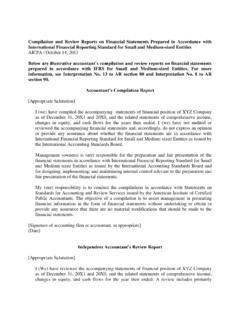Transcription of Escherichia coli (E. coli) - Centers for Disease Control ...
1 Medical illustration of E. coli bacteria CS267331-A September 2016 Escherichia coli (E. coli) What are E. coli?E. coli are a large and diverse group of bacteria. Although most strains of E. coli are harmless, others can make people sick. Some kinds of E. coli cause Disease by making a toxin called Shiga toxin. The bacteria that make these toxins are called Shiga toxin-producing E. coli , or STEC for short. STEC bacteria live in the intestines of many animals and are usually transmitted to people when they eat foods contaminated with the bacteria. The most commonly reported type of STEC in the United States is O157. Other STEC are called non-O157. Some types of STEC frequently cause severe Disease , including bloody diarrhea and hemolytic uremic syndrome, which is a type of kidney common is STEC infection?
2 Who gets infected with STEC? People of any age can become infected with STEC. Groups at highest risk for severe illness include: Children younger than 5 years Adults older than 65 People with weakened immune systems, such as people with HIV, diabetes, or undergoing cancer treatmentWhat are the complications of STEC infection?Most people recover after 5 to 7 days. However, around 5 10% of people with STEC O157 infection develop a potentially life-threatening complication known as hemolytic uremic syndrome (HUS), a type of kidney failure. Many people require dialysis. Most people with this condition recover within a few weeks, but some suffer permanent kidney damage or die. Young children and older adults are more likely to develop HUS. People infected with non-O157 STEC are much less likely to develop estimated 265,000 STEC infections occur each year in the United States.
3 STEC O157 causes about 36% of them. CDC estimates that STEC causes 3,600 hospitalizations and 30 deaths each for Reporting Cases of E. coli O157 InfectionThe time from when a person is exposed to E. coli O157 from contaminated food, water, or an infected animal or person to the confirmation that he or she is part of an outbreak is typically about 2 3 is exposed to E. coli O157 Time to Illness1 3 daysPerson becomes illTime to Health Care1 5 daysStool sample requestedTime to Diagnosis1 3 daysE. coli O157 identifiedShipping Time0 7 daysPublic health lab receives O157 strainSerotyping and DNA Fingerprinting Time2 4 daysCase reported as part of outbreakTotal time: 2 3 weeksWhat are the symptoms of STEC infection?Most people infected with STEC develop diarrhea, often bloody, with abdominal cramps within a week after being exposed to the bacteria.
4 Many also have are STEC infections linked to outbreaks?Most state health departments require that clinical laboratories that find a STEC infection report it. It typically takes two to three weeks from the start of a person s STEC illness to confirm they are part of an everyone who is infected with STEC seeks medical care, so not all ill people are diagnosed. We estimate that the number of people sick in an outbreak is often much higher than the number identified in













